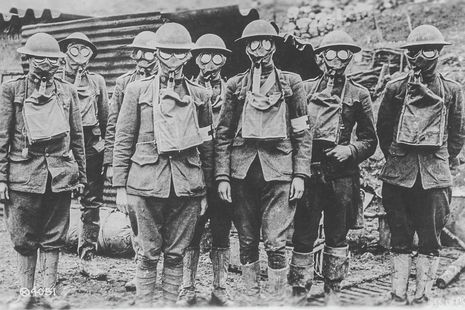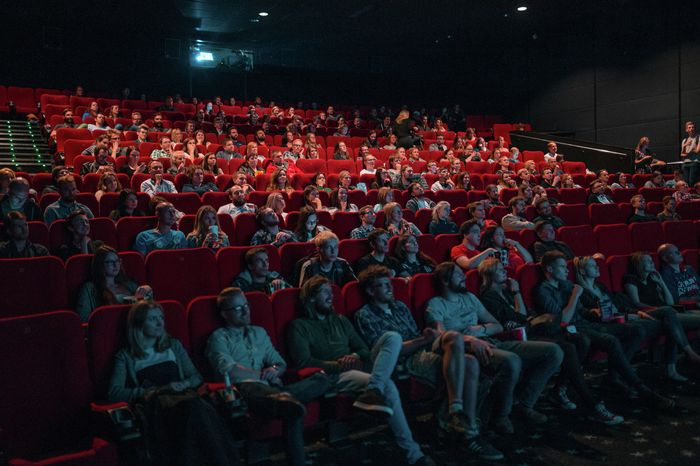All the best war movies are anti-war movies
In a market saturated with Hollywood action blockbusters, the best war films demolish the very idea of war

War is easy to theatricalise. Guns, bombs, and explosions serve the spectacle, and good-versus-evil the plot. Throw into the mix an innocent protagonist for us to root for, and an unsavoury enemy (usually a Nazi) for us to hate, and, voilà, you have an action movie à la James Camero
But the canonisation of wartime classics is not a benign, harmless process. In Mark Lacey’s words, cinema is a space “where stories about what is acceptable behaviour from states and individuals are naturalised and legitimised.” Ergo, how a nation consumes depictions of violence is fatally revealing.
“How a nation consumes depictions of violence is fatally revealing”
For instance, 1917’s recent success is baffling. It could have been made in 1917 for all it says that is new or original. Hollywood’s catalogue of war cinema is near-dominated by similar edge-of-seat action films, in which violence becomes video game-esque and trivialised. Then kids fantasise about becoming a heroic G.I. Joe, war paint smudged on their cheeks like Rambo. In other words, our war-canon errs on propaganda.
So, what makes a great war film? Spoiler: my top picks are there because they are anti-war!:
5. Good Morning, Vietnam (1988)
Good Morning, Vietnam’s genius is in how it undermines the Vietnam war effort through the very machinery of propaganda itself. Robin Williams, as a comedian-turned-radio presenter, uses the platform of radio to playfully bully the American Army, causing embarrassment for their military presence in Vietnam, and poking fun at how the American sensibility sticks out like a sore thumb there. Talking about fashion, he tells the soldiers that they should “make a statement” on the battlefield: who wants to blend in and wear camouflage when you can “clash”!? Think a Ricky Gervais podcast on political affairs.
4. Apocalypse Now (1979)
Also set in Vietnam, this wartime odyssey resembles Joseph Conrad’s 1899 novella, Heart of Darkness. The original story challenges the authority of Belgian imperial rule in the Congo; the film transposes the narrative to Vietnam, comparing American intervention there to the West’s unwanted colonial presence in Africa. This intervention, poet Ocean Vuong must ambivalently thank for his existence: “An American soldier f*cked a Vietnamese farmgirl. Thus my mother exists. / Thus I exist. Thus no bombs = no family = no me.”
“Yikes.”
3. Jojo Rabbit (2019)
Something else to make us say “yikes”- Taika Waititi’s surrealist satire on World War II that won Best Adapted Screenplay at the 2020 Oscars. We see the war through the eyes of protagonist Jojo, a young German boy whose imaginary friend is Adolf Hitler. Scarlett Johansson portrays his single mother, whose actions include drawing a beard on herself, and having a shouting match with herself, to fill the shoes of Jojo’s absent father. The film’s light, imaginative approach to Nazi ideology pushes images to levels of ridiculous absurdity, such as staging battle scenes full of clueless children.
2. Life is Beautiful (1998) & For Sama (2019)
These two films also adopt childhood lenses. The former portrays a father who uses his imagination and humour to distract, entertain, and protect his son while the two are imprisoned in a Nazi concentration camp. The latter, a documentary, follows two parents trying to keep their routine as normal as possible for their daughter, while facing the disruptive and devastating conflict in Syria. In western visual culture, depictions of war are dominated by the remote backdrops of the First and Second World Wars. Under-represented are the recent or ongoing, and much more relevant, conflicts of Sama’s world; director Waad Al-Kateab enables us to visualise what everyday life is like in modern war-torn Syria.
1. All Quiet on the Western Front (2022)
If Mary Shelley’s Frankenstein has taught us anything, it’s that things are never as simple as us-versus-them. Of all human behaviour, war is the most ambiguous of them all. The repeated justification of the unjustifiable, not just by monsters; not just by the Hitlers of the world; but by all of us. It isn’t hard to see that in no war scenario is it possible for the conventional good-evil dichotomy to remain intact.
This adaptation of a novel that was published (and banned in Italy) in 1928 shatters this dichotomy. Without a second thought, you find yourself rooting for the German crew of protagonists to survive. Not even win, just survive.
With trench warfare scenes sometimes pushing twenty minutes, it doesn’t shy away from the brutality of violence on the battlefield. Director Edward Berger allows conflict to play out in real time; we slowly experience the onslaught of killing through means ranging from rifles and tanks to flamethrowers (a particularly excessive moment). Protagonist Stan is at times so scared that his aggression twice takes him beyond merely subduing his enemies; less fighting them than hacking away at them. Relief at being alive is accompanied by intense guilt.
His odyssey is the everyman experience of World War I soldiers on all sides: long, mundane and boring days, punctuated by hours of terror. We quickly learn that your comrades are more likely to laud you as a hero for catching chickens for dinner than for throwing yourself at the enemy guns.
All before (spoiler) Stan is killed the moment the ceasefire is called. We see how futile, unfair and arbitrary the sacrifice demanded by war is.
 News / CUP announces funding scheme for under-represented academics19 December 2025
News / CUP announces funding scheme for under-represented academics19 December 2025 News / SU reluctantly registers controversial women’s soc18 December 2025
News / SU reluctantly registers controversial women’s soc18 December 2025 News / Cambridge welcomes UK rejoining the Erasmus scheme20 December 2025
News / Cambridge welcomes UK rejoining the Erasmus scheme20 December 2025 Features / Should I stay or should I go? Cambridge students and alumni reflect on how their memories stay with them15 December 2025
Features / Should I stay or should I go? Cambridge students and alumni reflect on how their memories stay with them15 December 2025 Film & TV / Timothée Chalamet and the era-fication of film marketing21 December 2025
Film & TV / Timothée Chalamet and the era-fication of film marketing21 December 2025










